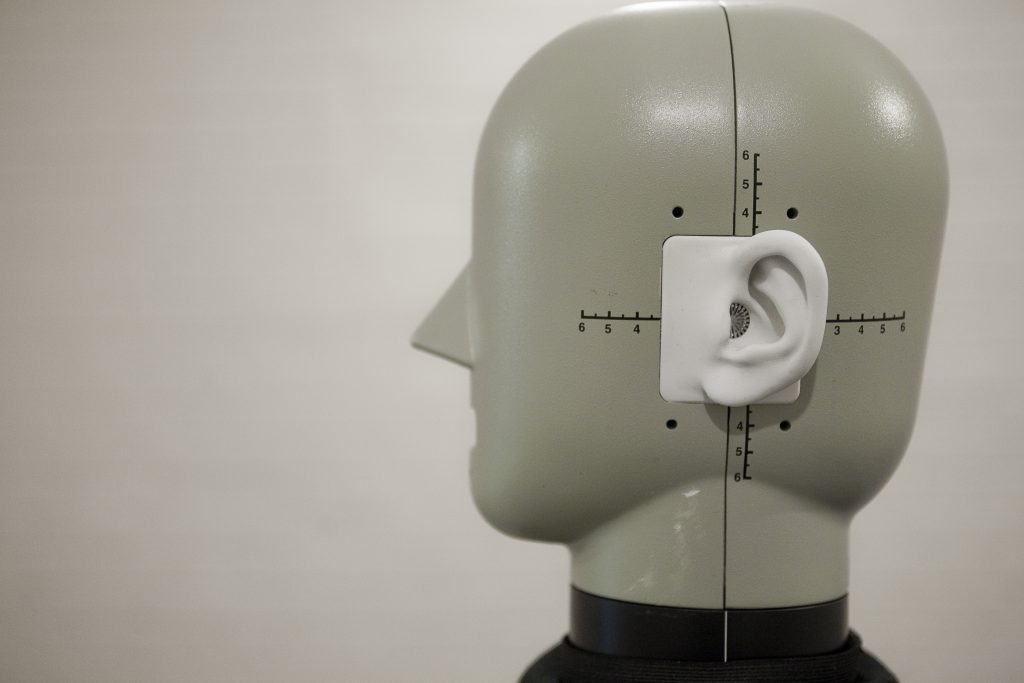PhD Acoustics project ideas
Here are some doctorate ideas we’re currently interested in. This isn’t an exhaustive list, so feel free to contact one of the staff to explore other ideas.
- Advanced materials
- Architectural and Building Acoustics
- Measurement and modelling
- Environmental noise, vibration and soundscapes
- Speech and music
- Manufacturing and vibro-acoustics
- Public engagement
Acoustic measurements
Noise, Vibration and Harshness (NVH) in Vehicles
Clever mechanical engineering is required to achieve passenger comfort whilst also minimising vehicle weight. Cars, buses, trains and ships all require diagnostic testing to help reduce noise and vibration generated by rolling on the road or track and mechanical components, engines, pumps etc.. Similar techniques are also needed in aircraft. In this PhD, new techniques will be developed for analysing multi-channel acoustic and vibration signals from vehicles in operation. This will improve analysis of how noise and vibration is generated and transmitted through the vehicle and lead to quieter vehicles and /or weight reductions. Candidates will need a good degree or Masters in Mechanical Engineering or equivalent.
Contact: a.s.elliott@salford.ac.uk
Architectural and building acoustics
Low Frequency Measurement of Sound Transmission

Standard methods for measuring the sound insulation of building partitions (e.g. walls) rely on the assumption of a diffuse field (i.e. a spatially uniform sound field). In the mid to high frequency range this assumption is approximately satisfied. At low frequencies however, the modal behaviour of a room dominates, leading to large spatial variations in pressure and consequently large uncertainties in the results obtained from test labs. This project will investigate alternative approaches for measuring sound transmission, that do not rely on the assumption of a diffuse field, based on techniques adapted from vibration and structural dynamic testing.
Contact j.w.r.meggitt1@salford.ac.uk
Archaeoacoustics of Stonehenge and other prehistoric stone circles

Speech and music have always been central to human life. To truly understand archaeological sites, we need to know how they sounded. But most sites have changed or are in ruins. In this project you will use acoustic models to overcome this problem. Suggested sites include Stonehenge (UK), Almendres (Portugal), and Antequera (Spain), advancing archaeological understanding of these places. We have constructed a pioneering physical scale model of Stonehenge, but we need to advance measurement and computer modelling techniques so we can more accurately recreate and analyse the sound.
Contact t.j.cox@salford.ac.uk or b.m.fazenda@salford.ac.uk
Metasurface diffusers for Architectural Acoustics
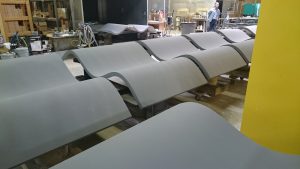
Diffusers are metasurfaces used to disperse sounds. In small rooms, such as studios, they smear early arriving reflections which otherwise could cause distortion. In larger spaces, such as auditoria, concert halls and theatres, they might be used to form stage or audience canopies to evenly distribute sound around the space. In the last few decades, many new types of diffusers have been developed, but still crucial aspects need researching. For instance, subjective testing is needed to evaluate the true perceptual worth of diffusers – such a phd could expand to develop binaural coloration measures which currently don’t work well. Another more physics-based doctorate could explore improving the design of metadiffusers.
Contact t.j.cox@salford.ac.uk
Audio engineering
Sound for Video Games
Video game audio, including sound effects and algorithmic music, offers the opportunity to explore a unique challenge in the creative industries: non-linearity. There are opportunities for novel projects across the range of sound in gaming, for example considering the use of spatial audio, non-linear narrative audio, or biophysiological measurement and enhancement of player responses to sound in games. There are also opportunities to explore “audio only” game research questions. For informal discussion around your ideas
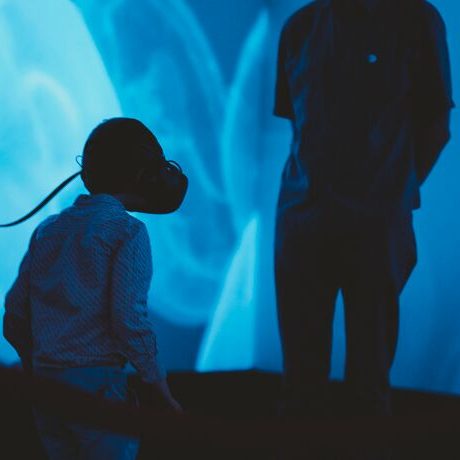
Contact d.a.h.williams@salford.ac.uk
Algorithmic composition and production
This work extends on the growing field of algorithmic composition and application of novel machine learning and statistical approaches to sound synthesis (in particular, timbral manipulation and sound design), music composition, and production methods (e.g., object-based audio, AI driven composition, music selection, and mixing). Use cases include game audio, augmented and virtual reality, and traditional music (from Muzak to Music Therapy).
Contact d.a.h.williams@salford.ac.uk

Improving reproduction from loudspeaker arrays using machine learning
Loudspeaker arrays are used to direct sound towards listeners to improve the quality of speech. Common examples include soundbars for TV sound and public address systems. However, the sound quality is always compromised due to there being multiple drivers. In this project you will combine machine learning and understanding of sound perception to explore a radical new way of driving loudspeaker arrays. To succeed in this PhD, you’ll need to have or develop knowledge in acoustics, programming and psychoacoustics.
Contact t.j.cox@salford.ac.uk
Computer modelling of sound

Computational prediction models are at the heart of modern acoustic engineering. They are used a wide variety of applications from refining the acoustic design of classrooms, concert halls or audio products, to predicting how noise exposure varies through an urban environment. They also allow ‘Auralisation’ to be performed, meaning buildings and spaces can be experienced before they are built or long after they are lost.
However, despite the power of these methods and the ubiquity of their use, there remain numerous substantial research challenges that need to be overcome, and which would make a good topic for a PhD. These include:
- Enabling full-audible bandwidth within one unified simulation algorithm. This is extremely challenging because that bandwidth covers many octaves, and present methods therefore either simulate low and high frequencies separately or are extremely computationally costly.
- Properly include diffraction in methods for high and mid frequencies. Presently commercial software only implements this to some finite low order, which is unrealistic and can limit accuracy.
- Better capture of absorption and scattering from materials. Present standards capture this in an overly simplistic manner, which constrains realism and accuracy.
- How best to perform simulations in large, inhomogeneous and possibly uncertain domains e.g. outdoor sound propagation.
- Bidirectional coupling of detailed local models of regions of interest with different, more efficient, models of the rest of the simulation domain.
- How to automatically focus computational effort on aspects of the model that have the biggest subjective effect to a human listener.
For more information, or to discuss this research area, contact: j.a.hargreaves@salford.ac.uk
Environmental noise and soundscapes
Auralisation of Aircraft Noise

Auralisation creates audible sound from numerical data. It is widely used to communicate noise issues to stakeholders and evaluate community noise impact. Within a Perception-influenced Engineering approach, auralisation tools can provide feedback to the noise analyst regarding the system under design. For aerial vehicles, it allows the simulation of flyover noise at a receiver on the ground. The auralisation process involves the source noise synthesis (or recording) and propagation of the resulting pressure time history through application of a time-varying gain to simulate spherical spreading; time delay to Doppler shift; and filter to simulate atmospheric absorption and ground plane impedance. This project will focus on expanding current auralisation tools to allow simulation of novel aerial vehicles and sound propagation in built environments.
Contact A.J.TorijaMartinez@salford.ac.uk
Human Response to Drone Noise

Soon, communities in urban and rural areas will be inundated with a new source of sound: drone noise. This sound is a major barrier to public acceptance of drones and therefore their wider adoption. The noise of drones does not resemble that from contemporary aircraft (or any other transportation noise), which leads to an important uncertainty in the prediction of the resultant perception of drone noise. Previous research has suggested that contemporary noise metrics are unable to account for the qualitative aspects of the particular features of drone noise.
This project will investigate the relationship between human response and drone noise, with the objective of developing metrics for an accurate assessment the noise and defining acceptable noise exposure levels for drone operations. This project will be developed in the framework of current activities carried out within the NASA Urban Air Mobility Noise Working Group.
Contact A.J.TorijaMartinez@salford.ac.uk
Soundscape Mapping
Noise mapping is the most widely accepted tool for assessing the impact of potential developments or for predicting the effects of noise mitigation methods. Traditional noise maps provide the spatial distribution of sound levels generated by a collection of noise sources (usually transportation and industry related sources). The soundscape approach goes beyond traditional noise modelling by incorporating information about the specific sound sources and perceptual attributes. Potential innovations could be to couple traditional noise maps with machine learning to categorise dominant sources or to add additional layers containing information about the soundscape. This project will investigate different approaches to integrate soundscape mapping into environmental noise decision-making.
Contact A.J.TorijaMartinez@salford.ac.uk
Noise, ventilation and overheating in residential developments
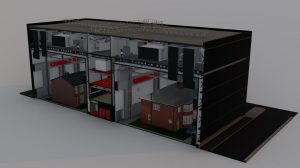
The aim of this project is to investigate the indoor noise levels from external sources (such as road traffic) that may be acceptable to occupants on a short term basis when the alleviation of overheating is required. A lack of guidance is resulting in new residential developments with poor indoor environmental conditions, where residents are not able to achieve thermal and acoustic comfort at the same time. This is giving rise to unnecessary sleep disturbance and adverse health effects in an increasing population of people, and reduced productivity given the recent sharp rise in home working. There is therefore a need to develop optimal solutions for noise and ventilation in residential developments. A starting and important step to achieve optimisation is to study the human response to and inter-dependence of acoustic and thermal comfort in dwellings. This is a collaborative, interdisciplinary project exploiting two unique world-class sets of experimental facilities and expertise at the University of Salford: the Acoustics Test Labs and the Energy House Labs.
Contact: Professor David Waddington
Remote Acoustic Condition and Performance Monitoring of Operational Wind Turbines
Contact B.M.Fazenda@salford.ac.uk
Growing concerns about climate change have led to an increased interest and investment in the development and deployment of low carbon technologies. Wind farms are now ubiquitous as a sustainable method for harvesting wind energy. Due to the availability of adequate area and levels of nuisance to human environment, these are commonly deployed in remote sites and off-shore locations where monitoring and maintenance of units is typically costly. Remote acoustic monitoring presents advantages that could provide an efficient solutions. An independent and remote system, i.e not mounted on the turbine, is able to monitor various elements of a turbine and detect various types of fault from the sound emitted by the turbines. This PhD project aims to research methods to extract a wind turbine’s acoustic signature and, by advanced analysis, determine the condition of its various components. Signal detection and analysis techniques will be a starting point, although more advanced techniques such as blind source separation and machine learning methods will also be part of the doctoral research.
Blast noise from controlled explosions: prediction and community response
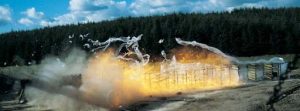
The aim of this work is to develop blast noise impact modelling suitable for real-world application industry working with the local community. The improved use of LNG and sustainable gases have served to raise gas quality up the agenda for operators, who therefore require technology-readiness assessments. To satisfy this increasing demand, the energy safety qualification industry need accurate predictions of their explosive noise to minimise the environmental impact of their testing while maximising testing opportunities. Existing PE-based modelling has been found to be inaccurate and unreliable for this work. This may be due to the very high sound pressure levels caused by explosions. However, complex terrain and meteorology also combine to make accurate noise propagation predictions an involved and computationally intensive process. This PhD requires scientific developments in two challenging areas of science: i) outdoor sound prediction modelling, and ii) assessment and management of community response. Fortuitously, these are both specialist areas in which the Acoustics Research Group at the University of Salford have unique, long developed, world-ranking scientific reputations.
Contact: Professor David Waddington
Materials for acoustics
Acoustics Metamaterials for Engineering Noise Control
Metamaterials possess useful properties not found in naturally-occurring or other manmade materials. In metamaterials, the effective density and elastic moduli can attain negative values. When one of these quantities is negative, the medium does not support any propagating waves in a range of frequencies and there is a “stop band”. This provides an opportunity of using them as nearly perfect compact noise screens. Few of the potential metamaterial noise control applications have been investigated so far. The proposed research will respond to the engineering challenge of finding lightweight materials for sound and vibration reduction particularly at low frequencies. The project will contribute particularly to the reduction of noise and vibration at frequencies below 250Hz since such low frequencies are attenuated less by walls and other structures in common constructions and can cause severe disturbance. As well as having many civilian applications, this is of military interest as metamaterials could be used as effective blast reflectors.
Contact o.umnova@salford.ac.uk
Engineering sound absorbing materials with multiple scales
Conventional porous absorbers have poor low frequency performance unless very thick layers are used. This project focuses on the development of new porous absorbers which can overcome this limitation. Low frequency absorption can be improved by introducing two very different scales of the pores, however so far only very simplistic geometries have been studied. We would like to investigate whether the introduction of multiple scales (i.e. pores with more than two characteristic sizes) can dramatically improve performance. While materials with multiple pore scales are well known (e.g. vermiculite), their acoustical applications are currently limited. A general theoretical approach to modelling multi-scale porous structures needs to be developed. It will then be possible to identify and optimise those material parameters which are most important for the acoustical performance.
Contact o.umnova@salford.ac.uk
Psychoacoustics
Biophysiological metering of soundscapes and noisy environments
There is a growing range of portable and non-invasive biophysiological measurement devices which allow us to consider long-term measurement of unconscious responses to sound. This work has particular applications in the areas of environmental noise evaluation (transport infrastructure, interior and exterior design), and in designing new tools for biofeedback driven metering and noise masking.
Contact d.a.h.williams@salford.ac.uk
Measurement of Sound Quality in Audio Engineering and Production
Some CDs sound great and some don’t: the sound quality of audio programme material is very variable. Expert and naïve listeners are quite good at picking up these differences in sound quality. However, so far there are no metrics that can quantify if a given music track is of good quality or not. This PhD project aims to define and extract quality features from audio signals that enable an automated rating of the acoustic quality therein. The technical aspects of the research project will be underpinned by a substantial study of human factors that determine perceived quality in sound and audio production. The foreseen outcomes are: 1) A framework that sets the relative importance of various objective acoustic measures of signal content in the context of human listening; 2) A digital tool that automatically rates and improves audio quality in a given stream. Applications of the knowledge and technology span from automated adjustment to different reproduction scenarios (eg: radio speech in a car vs. live sound) to archive recovery.
Contact B.M.Fazenda@salford.ac.uk
Virtual Monitoring Environments for Audio Production PhD
At the mixing stage in Audio Production, the professional option is to use expensive, specialist facilities. However, an increasing amount of sound production work gets done ‘on the move’ using laptops or working in offices. There is a need for better sound monitoring through headphones. Currently, headphone monitoring has its own inherent problems both in stereo and multichannel (e.g. 5.1) program presentation.
This PhD acoustics project proposes to develop a critical monitoring system for headphone reproduction. Research will investigate advanced digital signal processing techniques alongside a study of human listening factors to produce a system that enables sound engineering work outside a controlled studio environment. The outcomes of the doctoral project will result in hardware or software application crucial to the current trends of the sound production industry.
Contact B.M.Fazenda@salford.ac.uk
PhD in Acoustic Source Detection for Situational Awareness
Advances in technology (Bluetooth headsets, ‘iPods’, quieter cars, helmets) are leading to situations where an individual’s perception of the surrounding environment is hindered, making him/her more vulnerable to accidents and/or intentional dangers. Examples include: a driver unaware of a fast moving emergency vehicle; a motorbike or cyclist wearing a protection helmet; a civil protection foraging robot or vehicle on patrol. This PhD research project aims to study and develop detection and warning systems for users or equipment, allowing constant sound monitoring of the environment and identification of potential threats. The project straddles across a set of multi-disciplinary skills such as sensor engineering (with particular emphasis on acoustic detection), digital signal processing and cognitive behaviour. The research and development of advanced acoustic sensor networks and associated signal acquisition and analysis would form the core of the doctorate. Collaboration with psychology and social sciences partners will be provided to support the areas of cognition and human behaviour.
Contact B.M.Fazenda@salford.ac.uk
Vibro-Acoustics
Characterisation of Joint Dynamics
Complex assemblies are built-up from individual components that are joined with connections that rely on frictional contact or other dissipative mechanisms (such as elastomeric elements). A key issue that arises when modelling such structures is presence non-linearity due to jointed interfaces (rigid or resilient). The issue of non-linearity limits the accuracy of predictions, and presents significant barriers to the development of practical, yet robust, predictive models. Based on micro/macroscopic phenomena (such as softening, friction, stick/slip, etc.) the effects of non-linearity include dramatic changes in both damping and resonant frequency with changing excitation level. These effects can have a significant impact on the performance, or even survivability, of an operational assembly.
This project will investigate novel methods for characterising the dynamics of non-linear joints, with the view towards integrating them within models of complex built-up structures.
Contact j.w.r.meggitt1@salford.ac.uk
Hybrid Modelling for Vibro-acoustic Design
Predicting the vibro-acoustic response of a complex structure becomes increasingly challenging as the propagating wavelength decreases. In this high frequency regime Finite Element (FE) methods become unsuitable due to a) the large number of degrees of freedom required to represent the system and b) an increased sensitivity to small imperfections in manufacturing processes. These issues have been over-come, in part, through a hybrid FE-SEA (Statistical Energy Analysis) approach. The hybrid FE-SEA method has since become a popular approach to model complex built-up structures. Although a powerful predictive tool, several limitations remain.
The complexity of operational structures (e.g. vibration sources) outweigh even the most advanced numerical methods. Consequently, at the current state-of-the-art we are limited to modelling structures only in their passive state (i.e. whilst turned off!). One potential solution is to introduce ‘experimental sub-systems’ which describe the operational behaviour of active components. By including an experimental description of source activity we would be able to model structures in their active state (i.e. whilst turned on!).
This project will focus on advancing the hybrid FE-SEA-eXperimental approach to vibro-design.
Contact j.w.r.meggitt1@salford.ac.uk
Virtual Sensing for Internal Force Identification
Virtual sensing is a method whereby experimental measurements are combined with numerical models to determine quantities that are not accessible for direct measurement. For example, suppose we wish to know the forces generated within an electric motor, but do not have sufficient access perform the required measurements. A virtual sensing approach would enable us make measurements somewhere more coinvent, then by using a numerical model of the electric motor, correlate the external measurements to the unknown internal forces.
This project will investigate the application of virtual sensing to determine the internal forces generated by electric motor type vibration sources.
Contact j.w.r.meggitt1@salford.ac.uk
